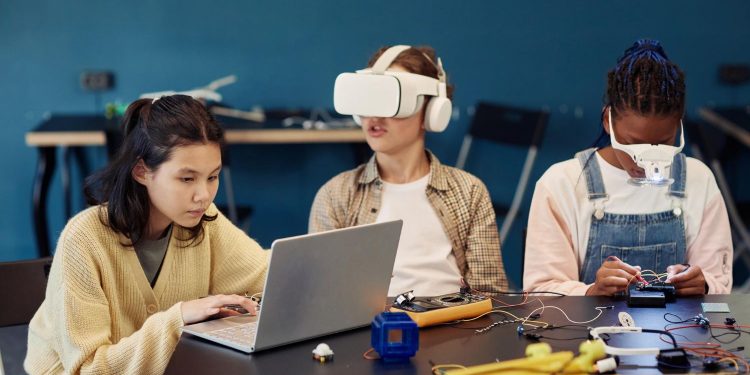Rapid technological advancements have revolutionized almost every aspect of human life, and education is no exception. The past era of traditional classrooms with chalkboards and textbooks leads the way to smart classrooms where children engage in interactive and experiential learning.
Smart classrooms utilize various technological tools to improve teaching and learning, making education more effective, efficient, and engaging for students. It has improved the learning experience of children worldwide, especially those with learning and physical disabilities.
The following article looks at how technology is revolutionizing education and the classroom. It also looks at ways technology and smart classrooms can assist children with learning disabilities like ADHD or dyslexia.
What Are Smart Classrooms?
Smart classrooms are technologically enhanced learning spaces with modern educational tools, including interactive whiteboards, tablets, computers, and other multimedia devices.
These tools facilitate teachers’ teaching experience and enhance students’ learning experience.
Some educational technologies frequently found in smart classrooms include;
Interactive Whiteboard
It is a proven fact child learn best when they engage with all their senses, and reason for the increased popularity of interactive whiteboards in classrooms. Teachers can present students with written, visual, and audio on a digital service, making learning challenging and complex subjects easier.
Digital Textbooks
Unlike traditional textbooks, digital textbooks offer students content, like videos, simulations, 3D images, etc., to engage and interact with, enhancing the learning experience.
Voice Typing
Voice typing is a helpful alternative in areas with poor internet connectivity where students find synchronous lessons challenging. Teachers can use this feature, which is found in several programs to convert spoken words into written text.
Google Lens
Google Lens is a smart classroom tool that enables students to snap a photo of an object and get relevant information from Google. With Google Lens, children can explore subjects that appeal to them without time constraints.
Digital Podium
The digital podium is an advanced lecture stand with various media components and devices facilitating seamless learning. Its features include a lecture recording system, an integrated UPS for continuous power supply, and ample storage space for a visualizer, keyboard drawer, and other essentials.
Gamification
Gamification involves incorporating game-like elements into the learning process. This technology adds a fun and engaging element to learning, which helps students retain information better. Gamification also provides students with instant feedback on their progress, motivating them to continue learning.
Smart Classrooms For Children With Learning Disabilities
Several technological advancements are revolutionizing and enhancing the learning experience for children with learning disabilities. Children with ADHD or dyslexia find concentration difficult in a regular classroom. They require constant stimulation, which technology like interactive whiteboards and virtual and augmented reality can assist with.
Here are some educational technologies to assist children with learning or physical difficulties;
Assistive Technology
Assistive technology is designed to help students with disabilities overcome their learning challenges. These tools can include text-to-speech software, speech-to-text software, and other applications that assist with reading, writing, and communication.
Personalized Learning
Personalized learning is another way technology can assist children with learning disabilities. AI-powered tools can identify a child’s learning strengths and weaknesses and use these to create customized lessons tailored to students’ needs.
The personalized approach makes learning accessible and engaging for children with learning disabilities.
Collaborative Learning
Cloud-based tools allow students to collaborate and work together on projects, which can help children with disabilities feel more included and engaged in the learning process.
Conclusion
The most profound aspect of educational technology is that students can engage with learners worldwide or experience life on a space station. Students are tech-savvy and spend a significant portion of their day interacting with various forms of technology.
With the dominance of smartphones, tablets, computers, and other devices, children now expect and excel when using technology in their daily lives. As a result, they are increasingly comfortable with navigating technology in all aspects of their lives. So why shouldn’t they use technology when learning?














